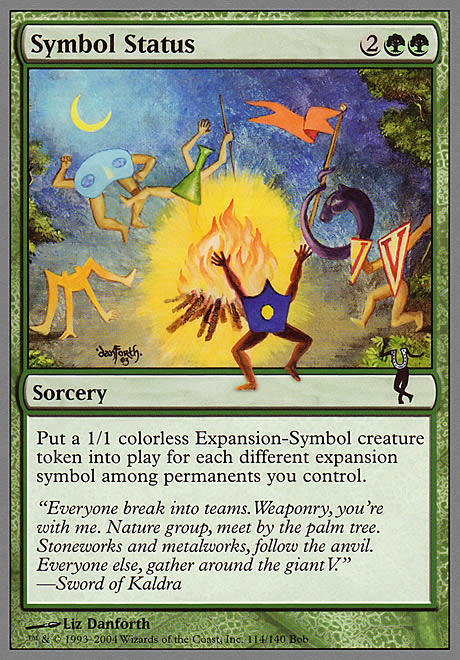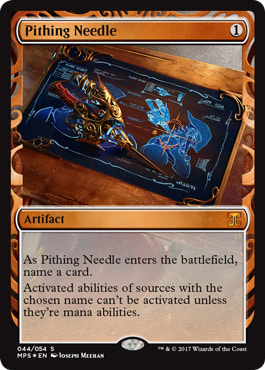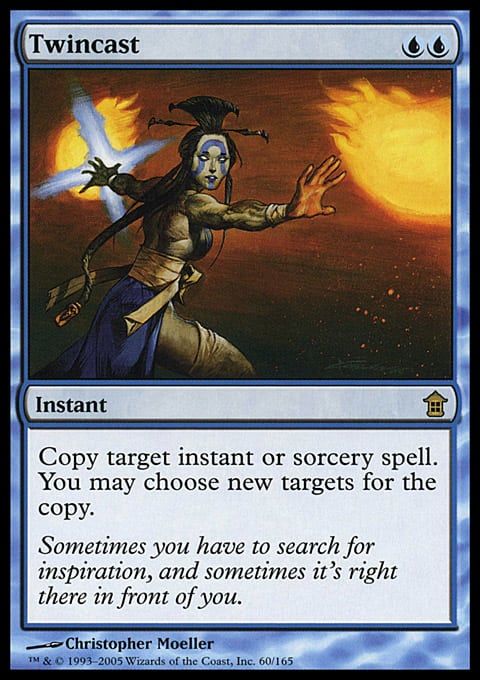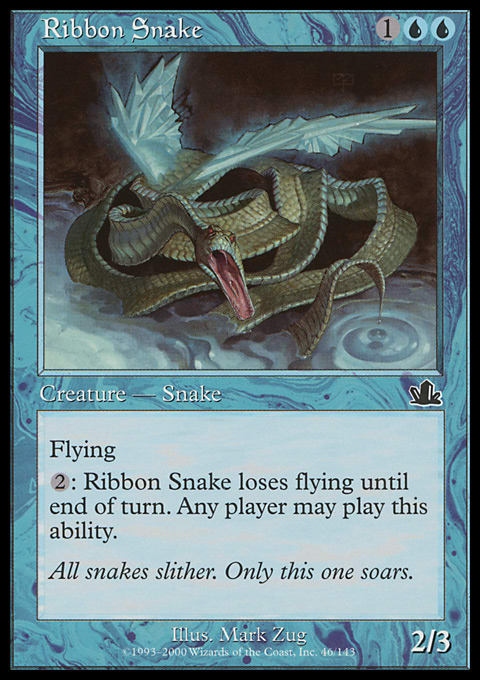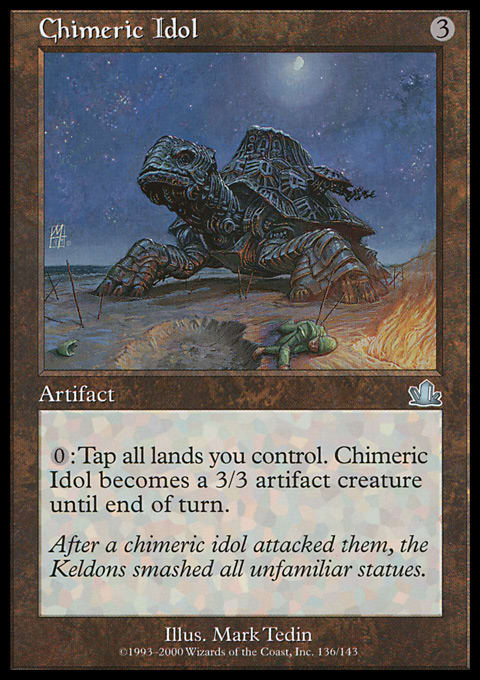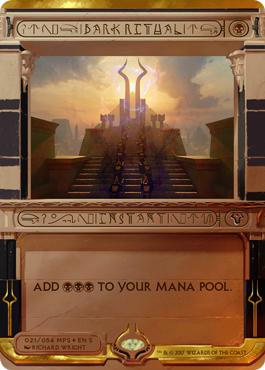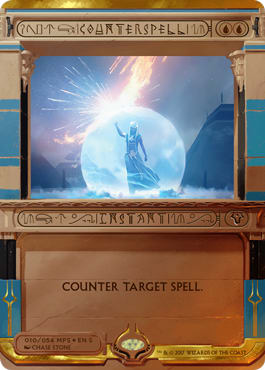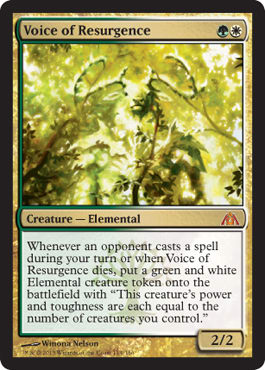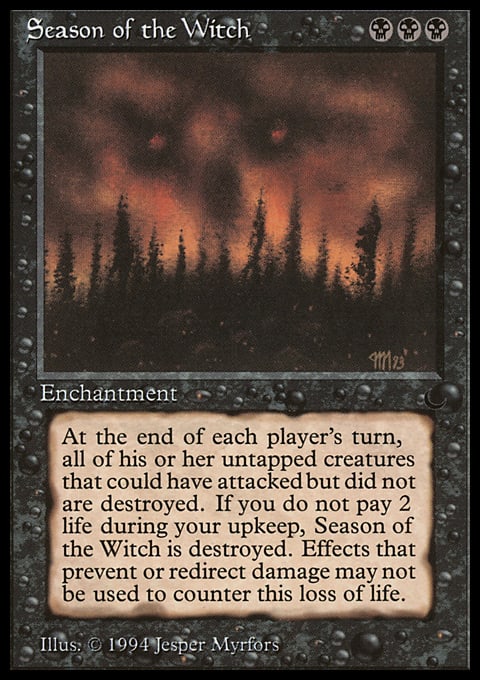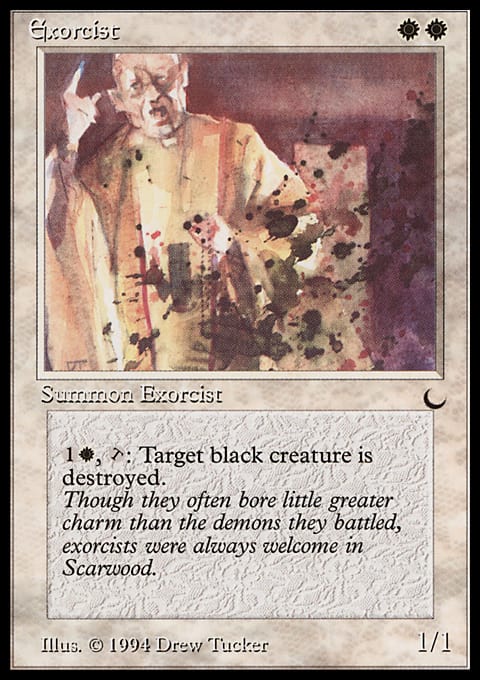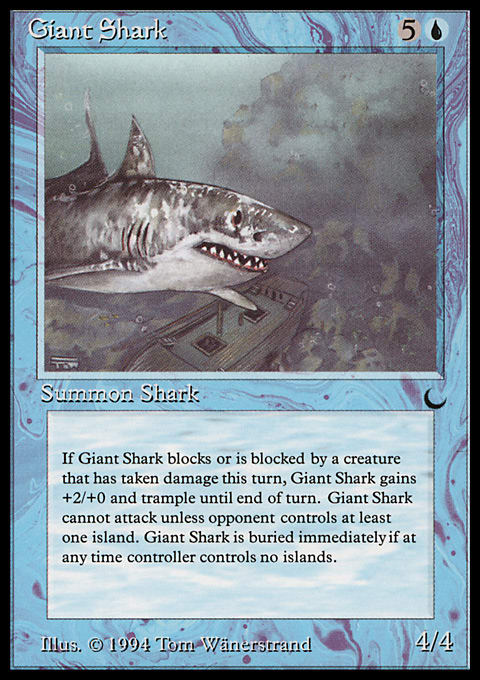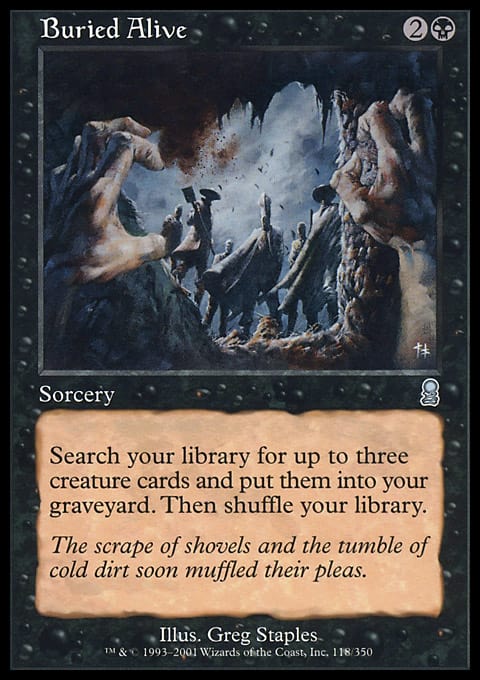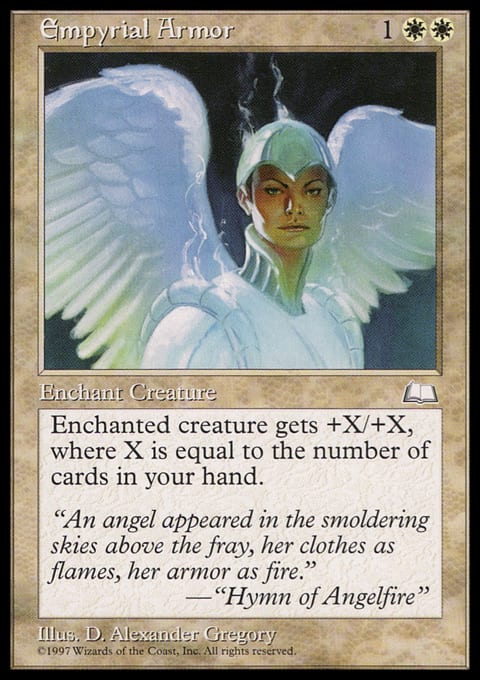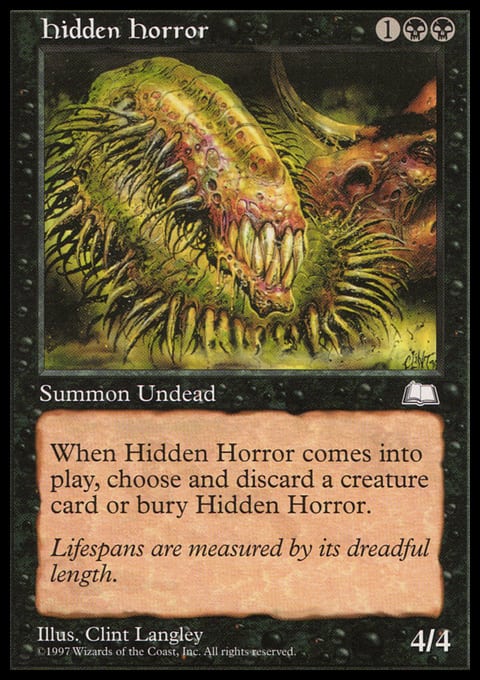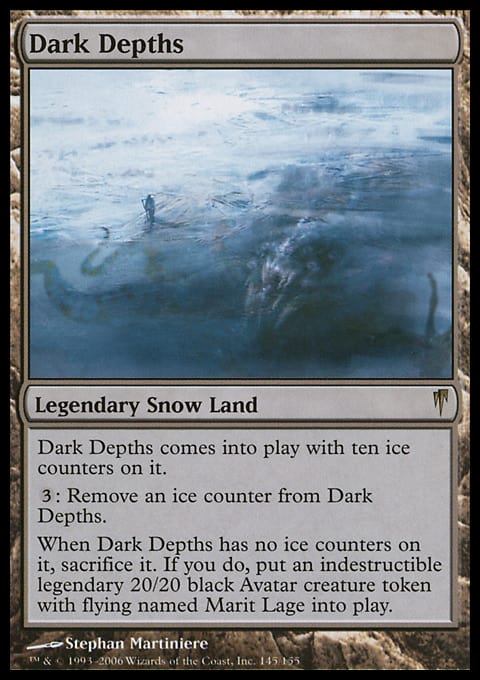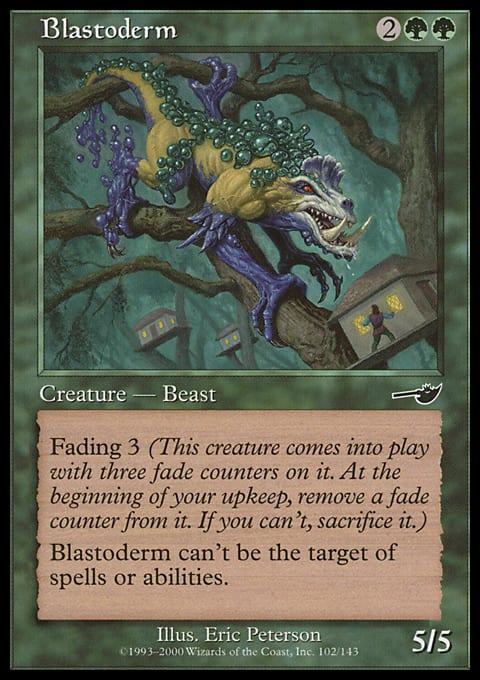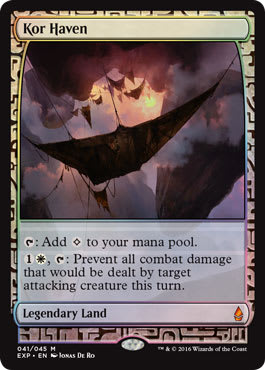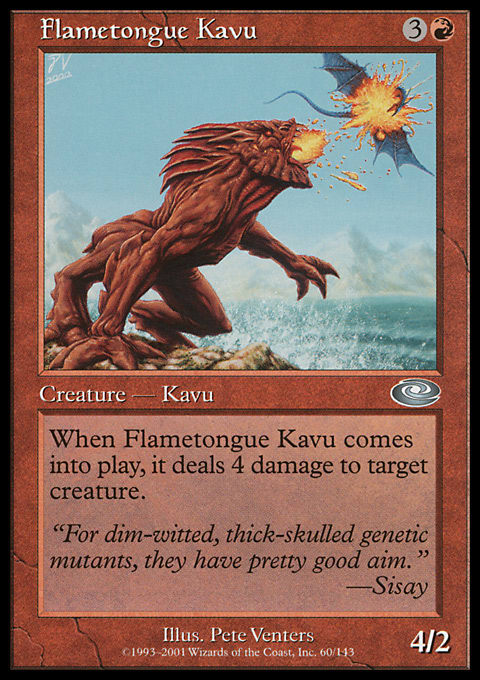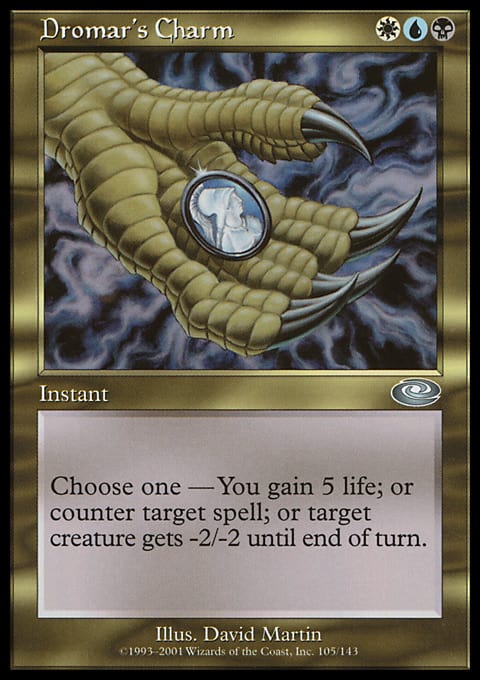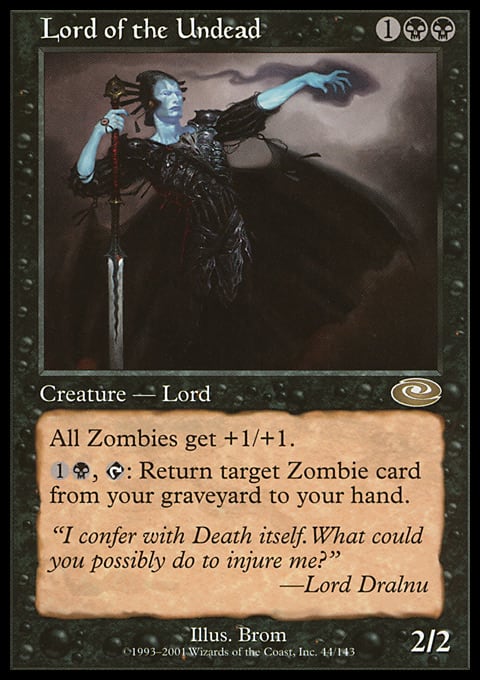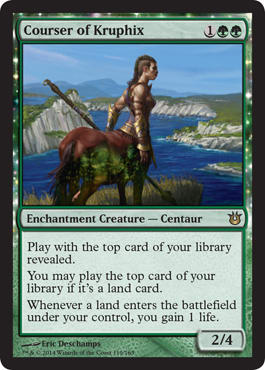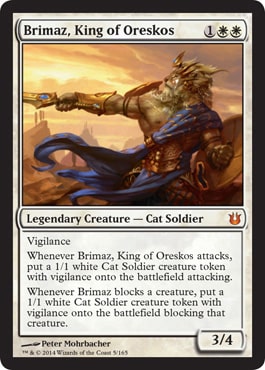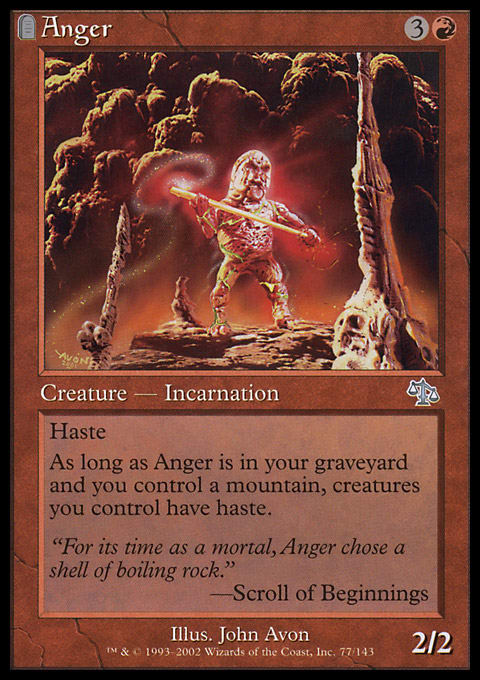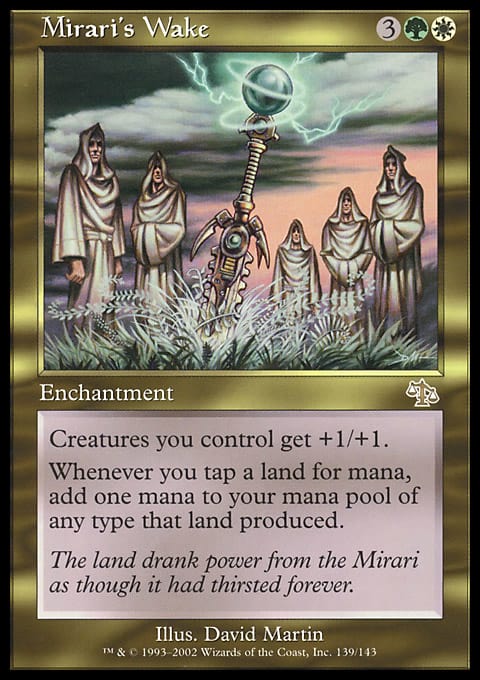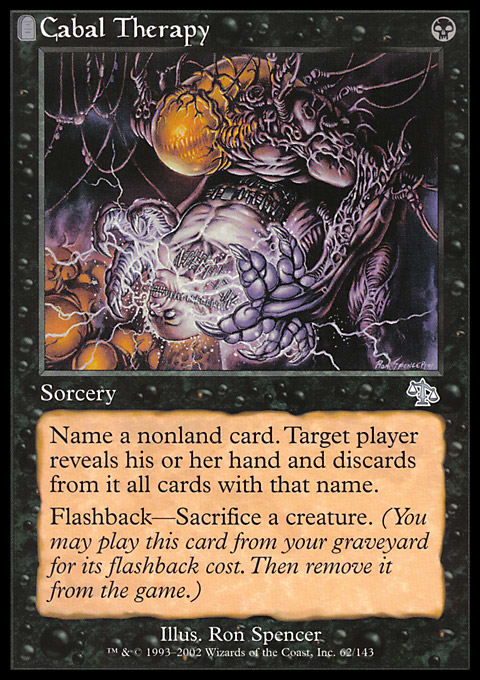As I am sure you’ve heard, a certain writer over at StarCityGames has begun a humor-ish attempt to rate all of the Magic sets ever, using highly subjective and funny criteria. That led me to my own thoughts about the overall rankings of sets and where I think they are, objectively.
I wanted to create a large review of all of the sets in history based on various objective criteria, such as quality of design and innovation. Now, it helps to have sets put in their initial context. It’s important to understand Antiquities in its original context, and it’s a lot more meaningful when compared to later artifact infused sets and what they had to proffer.
So I sat down, created a five scale list, and then scored every new set. Now, I didn’t include sets that were mostly or exclusively reprints, such as most Core Sets, Starter 2000, Conspiracy, or Modern Masters 2015. I’m sure you’ll find that to be all right, given the main thrust of the point, to consider new sets. I reviewed all of the cards in the sets for this ranking, to make sure that my initial takes were accurate, and then I changed points around.
As someone who has played with each of the sets as they were released (Except for Alpha, Arabian Nights, and Antiquities, but I started a few months later when those cards were heavily played) I think I have a good understanding of the context in question, and can hopefully give older and newer sets their due.
Now any such ranking of sets will include a level of subjectively; it has to. But it can’t be solely the subjective view of the beholder either. For example, on my scale, one of my Top Five Favorite sets of all time is ranked very, very low. And that’s okay.
Everyone has their own favorite Magic set or favorite card. And many of them are going to be from sets that I rank lowly. And that’s fine. We all have our pets. Our favorites. Just like a parent, we have our favorite kid, only we actually admit it! And my favorite may be when I started playing, or when I had that moment, or when I found some great synergy. That emotional connection with the game is very important, but that doesn’t mean the set will rank higher against its peers than it otherwise would.
Here are my five categories:
Flavor — How flavorful is the set? Does it have a good story line? Are there great names and art that resonate? And most importantly, do the mechanics matchup with the central concept of the set?
Power — Here you go Spikes! How powerful are the cards in the set? How impactful are they at a kitchen table or tournament? Do they have a useful pedigree?
Design — How well designed is the set? Are there interesting layers? How good is playing it in limited? Are there good mechanics that work well?
Tilt — This is my catchall category for a variety of factors. How fun was the set? Did the set do anything extra? Did it set any trends? Did all of the pieces come together in flavor, design, innovation and power?
I ranked every set 1-10 in these criteria, and then collated those rankings. On three separate occasions, I went back and reviewed them. Every time, I had to wonder what I was thinking the first time through. But now I have the sets where they make sense, and I was surprised at how well some sets did that often were excoriated by others, and how poorly some did that get praise or that I like, and it’s led me to reevaluate some things. The highest rated set scored 43/50 and the lowest rated got just 19/50. When tied, my Tilt score is the tie breaker.
Like every good statistical variance, we have a logjam in the middle. From 29 through 34 points, we have 40 sets, so a little more than half of the 78 sets in total. So I would say that 29 is on the lower side of average, and 34 the higher end of average, but all 40 of those sets are average quality. I have 18 sets lower and 20 sets higher, so you can see a typical standard spread and deviation there. There is also a good spread with age as well. 6 of the top 20 are pre-Modern sets with the old style of border, which is about the percentage of sets are out there. Good job stats!
There are 78 sets. Today I want to look at the lowest charting 18, the ones that are below average. The bad sets. And then we’ll do 20 at a time moving forward. Ready?
78. Saviors of Kamigawa, 19 Points
Wow did this set not score well in any category. In no way did it try to be innovative, in no way did it have a lot of clever and useful designs, and in no way did it have anything approaching a good power level. It was weak, poorly executed set, that was not designed well. The themes in the set include having a lot of cards in your hand, with an Arcane take on Gerrard's Wisdom, and the Sweep and Epic abilities were incredibly weak. Good cards from the set were few and far between, and mainly things like Pithing Needle and Twincast. I can’t remember who, but one set reviewer at the time basically commented that this set seems about as detailed and good as they could do with my friends over a weekend of beers. It plays weak, and looks off. And let’s not remember that this set was released later, when WOTC knew how to design an actual, proper, modern and balanced set. Nothing here lines up with quality.
77. Portal, 20 Points
Now I like where these beginner-friendly sets were going as a central concept for introducing people to Magic. And I gave it a high rating for innovation for that reason, but it is one of the worst designed sets of all time, and has an all-set low of 2, that it shares with Saviors above. Portal made a bunch of mistakes in design. Intercept instead of blocking? No creature types on the card? And the worst is to have a set with just sorceries, but which can be played as instants. That’s just bad design after bad design. If you are going to have a sorcery-only set, then don’t have countermagic like Extinguish in there. Nice try though! I’d rather you fail at trying than not-fail at not-trying at all like Saviors.
76. Scourge, 21 Points
What do Saviors of Kamigawa and Scourge have in common? Both had Brian Tinsman as their lead designer. Now, I think he’ll eventually learn these lessons, and just knock a set or two out of the park later. One of his sets scored in the Top Ten, but it takes a lot of Magic drudgery to get there. Scourge is a set that is more fun in concept than in fruition. It’s didn’t try to do too much, it lacked a lot of ambition, and it really plays in an easy space with Dragons and such. Coming in third in a tribal Block that included a lot of creative mechanics like morph, Scourge added another tribe to the list with Dragons, and if you think that would be awesome, then you’ll be sad. The Dragons are fun! But the handful of quality entries and mechanical tie-ins would be lackluster compared to the entry of storm onto to the world. That gives Scourge a higher power rating with 7 than you would normally expect here, but fun? Keeping track of storm counts? Blowing out tournament games? Not really. Its design and tilt hit low, as the rest of the set feels weak in comparison to the block and is not well received.
75. Prophecy, 21 Points
Sigh. Yes. Sorry casual aficionados. I mean I love me some Plague Winds and Avatar of Fury. But this is not a well-designed set from multiple angles. For example, some cards look downright awesome in multiplayer compared to duels, like the Wind cycle and the Avatars. But then we have those dope-y Rhystic Cards like Rhystic Tutor and Ribbon Snake where people can spend some mana to make your stuff suck. Now that works in a duel, but against five people, someone is bound to have the spare mana to stop Rhystic Tutor from doing anything. So it is for duels or multiplayer? It has a weird tension. And the good cards here, few and far between, are the handful of major hits for multiplayer or the handful of hits for duels that, um . . . aren’t here. The cards in here that made tournaments at the time did so because of the weakness of the era, like Chimeric Idol as a 3/3 for three mana, rather than for quality.
74. Portal, Second Age, 22 Points
At least Portal 2 got rid of the “Intercept” language and brought in creature types, right? Also, the flavor here is a lot better than Generic Fantasy Land with no story line from the first Portal. So, it’s lower in Innovation points by bunches, but has decent flavor and slightly better design to make up for it. It has nations with distinct feels, the cool Nightstalker creature type, guns, and a lot more. Yay for P2A!
73. Mercadian Masques, 22 Points
This makes me sad, because I like what this set was trying to do. Outside of Core sets and Masters and such, this is the last Block that is a normal, un-themed block. After that we have gold, tribal, graveyard, artifact, enchantment, land, and more blocks with major emphases that force you to evaluate cards differently, as the classic Terror vs Shatter in Mirrodin demonstrates. Masques was intentionally held off on the weaker side and it erred, just like the Urza’s Block before it, but on the side of tempo. You had too many cards like Rishadan Cutpurse, Rishadan Port, and they headlined the most painfully sloooooow Standard of all time. I think they handled free spells well enough, without too many issues, and cards like Gush were fine. But even their reprints were off, and this is the last time we’d see cards like Dark Ritual, Counterspell, and Brainstorm in a Standard legal environment. This was not a good set, because it wanted to weaken itself post-Urza’s block, and it went way too far. I mean, a four-mana defender common in Stinging Barrier was the best common card to draft in the format! Not even Rebels can fix that.
All right, those are the worst six sets. Now ready for the next twelve?
72. Homelands, 24 Points
No surprise here, you all knew this was coming. So let me share with you the overall scores I gave it — 4, 7, 3,4, 6. That’s not bad. But it’s 7 in flavor is not enough to make up for its shortcomings in other areas, like innovation and design. I gave it a solid 6 tilt because it’s actually fun in Limited, it’s better than Alliances or Ice Age in Limited by far. It has a lot of fun cards in here to play around with, like Eron the Relentless, Baron Sengir, Merchant Scroll, Autumn Willow, Ihsan's Shade, Memory Lapse, and who can forget Joven's Ferrets. Minotaurs! But the set lacks power, and the designs are often scared of themselves and have built in weaknesses that hurt the card, like Reveka, Wizard Savant. Overall, a clear miss, but you can get where the set was going. I think a modern take on with the same storyline, card names, and flavor would have been be a huge hit. Think about how you would design the card named Castle Sengir, with all of the tech available today!
71. Dragon’s Maze, 24 Points
Well, some rumors wind up being true. Dragon’s Maze is not much of a set. It lacks ambition. It lacks quality design. It barely has a story. As the 6th set on the plane of Ravnica, it’s weak, minor, and lacks real value to it. It’s a “Meh” set. Other than Voice of Resurgence, and a handful of other cards, there’s just not a lot here to recommend to anyone. The new mechanics that could have been spicy often lack heft, like the Fuse take on split cards. The over reliance on cycles really disrupted the set and gave too many limited-ish cards that were weak outside of that. There’s little left to sink your teeth into.
70. The Dark, 24 Points
This is Abe’s sad face. The Dark is one of my favorite sets of all time. It went into a fun and interesting place, and led to some great darker places in the mythos. It was one of the last sets from the early days to have cards inspired by great flavorful ideas and concepts that are key to the genre, like Exorcist, Preacher, Fasting, Angry Mob, Blood of the Martyr, Inquisition, Drowned, Fire and Brimstone, Fountain of Youth, Miracle Worker, Ghost Ship, Giant Shark, Cave People, Leviathan, Living Armor, Witch Hunter. Can’t you feel the majesty of those concepts? Don’t they resonate to your bones? Tivadar's Crusade. Season of the Witch. Sisters of the Flame. Worms of the Earth. Eater of the Dead. The set is so evocative, in some ways more than sets that came later. It breathes. But yet, the card quality isn’t here. We can see that. It’s just not what you need from a set. And it’s the first set of the initial group to not really be that innovative. It’s not pushing any major boundaries, it just is. So no points for ambition or impact on later sets. Yes, the set is great for what it does, and I will always love you The Dark! Even with your dopey set name!
Seriously, if we had a ranking of names of the sets, The Dark would rank last.
69. Eventide, 25 Points
Okay, I suspect that most of the sets on today’s list won’t surprise too many folks. Dragon’s Maze? Homelands? Prophecy? Saviors? But Eventide may seem a little out there. But let’s dig into the set more. What does Eventide bring? It’s the fourth set in the giant Lorwyn/Shadowmoor duo. It just follows the pattern established by its predecessor with the enemy hybrid theme. Does it break into some great new space with its persist entries? Does it really push wither to a new place? Does it take its Spirit Avatars and Lieges to really powerful places? Does it push hard with Chroma? Not really. Its cards are weak, even in Limited. Take Desecrator Hag, which is a much worse Gravedigger that’s harder to cast. All it does is follow the route that Shadowmoor set. The one new thing it adds is the untap ability, but that remains very weak and hard to use. While there are a few noteworthy entries, like Figure of Destiny, Flickerwisp, and Glen Elendra Archmage, they are few and far between.
68. Weatherlight, 25 Points
The problem with Weatherlight is that sold itself as innovative, but then didn’t play that way. It sold itself as this awesome set that was going to use the graveyard as a resource. Get ready to get your minds collectively blown! And then we got Buried Alive! Great! And then . . . not a whole lot else. Nature's Kiss? Alms? Argivian Find? Barishi? We had already had Argivian Find-like cards! Sure, you had a smattering of cards that worked in Limited, like Barrow Ghoul, Circling Vultures, or Necratog, but not much else. The handful of solid entries, like Hidden Horror, were pretty weak alongside much of these cards. Two other major items of note. This was the set that made Mirage/Visions/Weatherlight a much weaker draft format, as the first two sets were pretty balanced and you a great format, and then this came along with its two broken White commons and it was game over for Limited. (Heavy Ballista, Empyrial Armor). It’s also the beginning of the Weatherlight Saga, and that gave it a great story launchpad, but left behind the very lush and detailed area that the first two sets explored, and that created an odd dissonance with the Block. And WoTC never learned, as we regularly had third sets outside of the oeuvre of their block later.
67. Coldsnap, 26 Points
It’s too gimmicky. That’s basically sums up the bad of Coldsnap.Why is this snow mana a thing during Standard? Why did we do this? Other than a handful of casual cards, and Dark Depths, which used to be a casual-only card pre- Vampire Hexmage, this is a set that basically asks if you want to commit for Skred. Are you a Skred Red fan? The set, the concepts, the mechanics were all just bizarre. They didn’t work with Standard. But the biggest issue with the set was the mechanics being super insular, and not really ready to play with anything else. If you were playing snow, everything was snow. There was no other option, right Skred?
66. Gatecrash, 26 Points
Dragon’s Maze’s presence on this list won’t surprise, but in-set pal Gatecrash? What do I have against it? Much like Dragon’s Maze, heading back to the plane of Ravnica doesn’t have a lot of great story behind it, we don’t see major plane-spanning events happening. The guilds are okay, but the additions to them aren’t that great for the most part and feel a bit by-the-numbers. Simic’s evolve, Boros’s battalion, Dimir’s cipher, Gruul’s bloodrush? All pretty obvious. Only Orzhov has a more interesting extort. Some of the cards are okay, but nothing major, and nothing that should come from a modern set in the last few years of the game, after they have learned their lessons. A few cards are solid, like the Primordial cycle that make the cut, but too much feels very insular with their guilds or too related to Limited.
65. Nemesis, 26 Points
Even though Nemesis scores a full 5 points more than Prophecy and 4 more than Mercadian Masques, it’s still here on today’s list. Sad, right? It’s actually much better than the two entries on either side, and I am sad when people lump them together, but it’s still not a major hit. But it’s not bad, and there are more winners here at first than you might think, with cards like Blastoderm, Belbe's Portal, Ascendant Evincar, Kor Haven, Flame Rift, Daze, Blinding Angel (a major force at the time in control), Lin-Sivvi, Defiant Hero, Rootwater Thief, Parallax Wave, Mind Clash, Predator, Flagship, and more. The problem? Lots of chaff as well as tempo cards like Rising Waters that backed the Masques tendency to long boring games even more. So the lack of zest throughout the set was sad, despite the interesting story line back on Rath and key players like the Evincar, Predator, and Lin-Sivvi getting very potent cards. So let’s raise a glass for Nemesis!
64. Alara Reborn, 27 Points
Let me show you my scores for AR. 8,6, 4, 5, 5. High innovation for the all-gold concept! But its delivery isn’t that hot. Not a lot of power. Alara is reborn! And that’s fun, but the story doesn’t connect to everything being gold. That dissonance is odd. I feel like they did an all-gold set because they wanted to do an all-gold set, and this may not have been the best place, story-wise. Not a lot of stuff going on. Wouldn’t there be mono-colored creatures on Alara? Mono-colored effects? And the cards swung and missed. Cascade? Awesome! A few cards here and there? Awesome! But the set’s overreliance on gold cards means most of these cards work oddly, since they meet the rules of gold cards, leaving odd takes on almost every card in the set. While it’s interesting to see the hoops they had to jump through to get mana rocks and other things in the set, it’s frankly more effective as a thought experiment than as an actual in-print set. It’s too off when you play it in real life.
63. Planeshift, 27 Points
Ah yes, Planeshift. The set sandwiched between greatness. Now I remember playing it at the time, and from limited to Block to Standard, Planeshift had one major claim to fame — it’s great uncommons. It’s rares and commons are all weak, and you can only do so much with uncommons. Here I’ll show you. Uncommons? Flametongue Kavu, Thornscape Battlemage, Thunderscape Battlemage, Allied Strategies, Dromar's Charm, Fleetfoot Panther, Voice of All, Treva's Charm, and a lot more. Good rares? Only five rares are powerful — Orim's Chant, Lord of the Undead, Meddling Mage, Draco, and Eladamri's Call excite, with the weak stuff all over. Commons? Pretty much Hull Breach and that’s it. So really, the uncommons with the 5 each of Charms, Battlemages, and deep cards elsewhere led by FTK and a handful else. And the rest is chaff, like the Planeswalker’s cycle (such as Planeswalker's Mirth and Planeswalker's Favor) and winners like Planar Overlay, Forsaken City, Urza's Guilt, and Ancient Spider. Beyond that, we have the printing of a few fan favorite characters, but they aren’t exactly winners, like Tahngarth, Talruum Hero. Too bad the set was weak, because it was really stuck in the middle and had such a great opportunity.
62. Born of the Gods, 28 Points
How did you get down here Born? Three sixes and two fives. Boringly average. Theros is good while Journey into Nyx ties some new on-theme stuff with Constellation. But Born’s heroic and bestow cards are usually weaker, it’s inspired ability is adequate at best, and the set feels very has-been, post-Theros. Sure, there are a handful of useful cards in here like Courser of Kruphix, Brimaz, King of Oreskos, and Perplexing Chimera. But other than the Archetype cycle, this set is really more about the Limited than about decks that aren’t, well, so limited. When your best cards include Searing Blood, you know you are limited.
61. Judgment, 28 Points
Like a lot of sets here, Judgment was a bit of a hit and miss set. It followed the powerful two sets earlier in the Block with a much weaker slate of cards, but there are some interesting things here, namely the interesting Wish cycle like Cunning Wish and the Incarnation cycle like Anger. Those are both really strong ideas, and the set would normally get more points for that. Outside of those two cycles that have some hits and some misses, we then have cards like Cabal Therapy, Grizzly Fate, and Mirari's Wake. But the vast majority of things in the set are weaker and worse than the sets around it, and in context, Judgment includes a lot of junk like Treacherous Vampire, the Wormfang series, cards that work too much in the Limited format without any major value elsewhere (Book Burning, Rat's Feast) and such. And despite the ![]()
![]() heavy aspect of the set, it’s a top-heavy and bottom-heavy set that has some things to recommend it, but doesn’t really live strong.
heavy aspect of the set, it’s a top-heavy and bottom-heavy set that has some things to recommend it, but doesn’t really live strong.
And there we are, bottom 18. Everything else hits at 29 points or higher. There are some infamously bad sets you didn’t see there. Right?
But at 29, we begin the future of the average sets, and look at the 20 or so sets that are on the bottom half of average. And when we finish, I’ll give you the full set of ratings too!
So what did you think of my list? Did you like the ratings? Anything you disagree with? Let’s talk!













